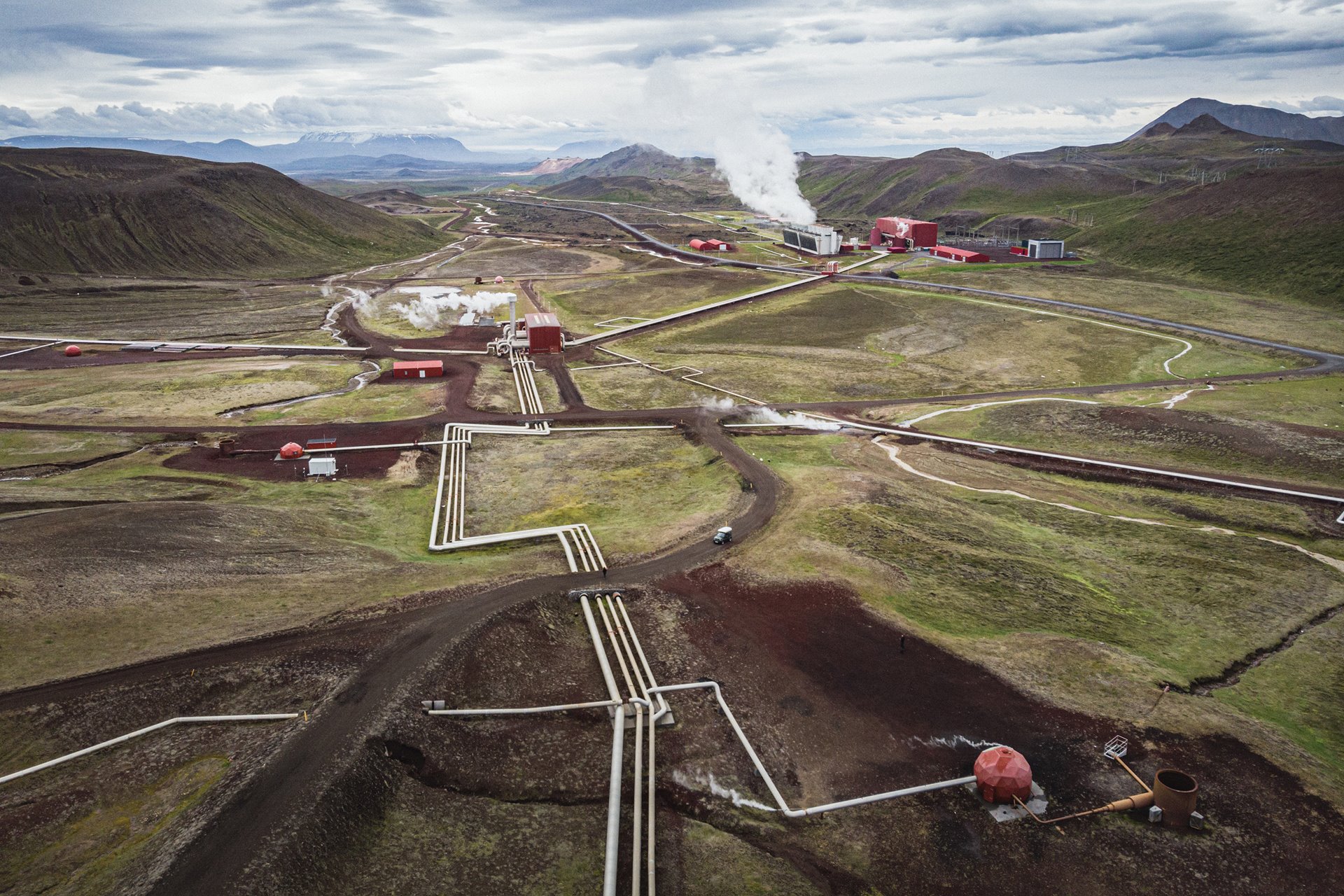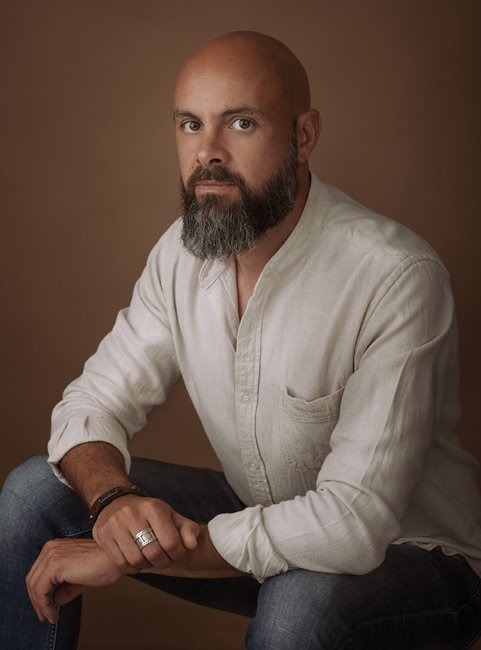Carbon emissions from a geothermal power station, in Krafla, Iceland, are reinjected into geothermal wells to minimize their environmental impact.
Geothermal power plants draw fluids from underground reservoirs to the surface to produce steam, which then drives turbines to generate electricity. The process is not emissions-free, as the remaining fluids contain harmful condensates, but the plant injects these back into deep bedrock, where the CO2 can turn rapidly into minerals. Geodesic domes cover the boreholes and equipment, reducing the visual impact on the environment. In 2020, this plant fixed over 50,000 tonnes of CO2 in this way. Such carbon fixing remains a controversial issue, with critics saying that the technologies distract from the pressing need to reduce carbon emissions rather than capturing them.
This project documents different technologies that offer possible routes of transition to a net-zero economy. The photographer visited innovative facilities across Europe, from Iceland to Italy, from 2020 to 2022.
Human-induced climate change is the largest, most pervasive threat to the natural environment and society that the world has ever experienced, according to the UN Human Rights Office, OHCHR. This prompted the European Union to establish targets to cut greenhouse emissions by at least 55 percent by 2030 and to reduce them to net-zero by 2050. European companies seeking ways to achieve these goals are exploring renewable energies, new technologies for food production, and the circular economy as potential ways forward.

